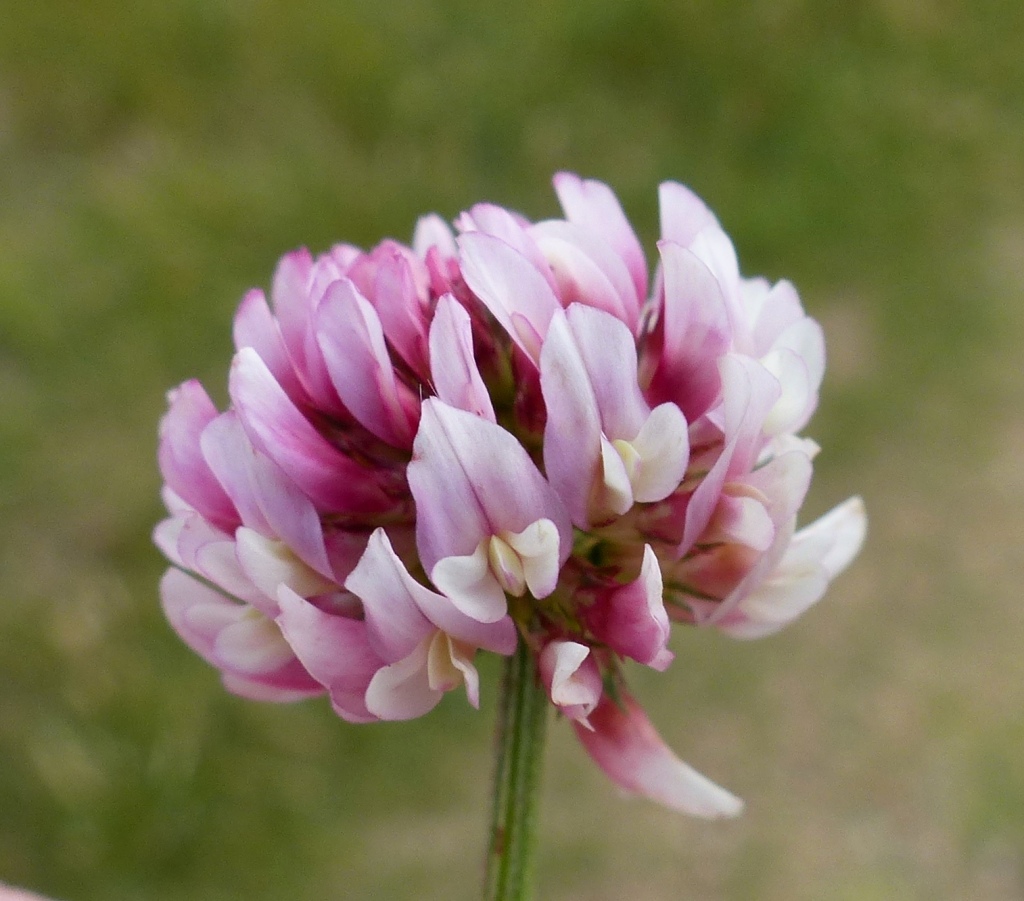Trifolium fragiferum var. fragiferum
Strawberry CloverProstrate or tufted perennial herb; stems 5–50 cm long, often rooting at nodes, sparsely hairy to glabrous. Leaves palmately trifoliolate, long-petiolate; leaflets ovate, elliptic or obcordate, 5–30 mm long, 3–18 mm wide, somewhat glaucous, glabrous or hairy along nerves and margin, prominently veined particularly near margins, spinulose-toothed, apex obtuse or retuse; stipules membranous. Inflorescence 10–30-flowered, axillary, globose to semi-globose or ovoid, 8–20 mm long, 8–20 mm wide, pedunculate; flowers subsessile. Calyx at first c. 4 mm long, usually pilose to woolly on upper side, tube cylindric-obconical, 10–veined, teeth unequal, more or less the same length as tube, spiny, lower 3 teeth somewhat shorter than upper 2; corolla 6–8 mm long, white or pink, persistent; standard marginate or minutely crenate. Pod ovoid to globose, c. 2 mm long, included in inflated calyx tube;, calyx pilose or hispid, tube reticulately veined, teeth erect or recurved, throat narrowed, with a ring of hairs; seeds 1 or 2, reniform, c. 1 mm long, brown. Flowers mainly Nov.–Apr.
LoM, MuM, Wim, GleP, VVP, VRiv, MuF, GipP, OtP, WaP, Gold, CVU, GGr, DunT, NIS, EGL, HSF, HNF, OtR, Strz, VAlp. Naturalised all States except NT. Native to parts of northern Africa, Eurasia. A common and well-established weed throughout much of Victoria.
Zohary & Heller (1984) recognize 5 varieties but apparently only the type variety occurs in Victoria. Plants display a deal of variation in habit, size and indumentum apparently due, at least in part, to the environment in which they grow.
Jeanes, J.A. (1996). Fabaceae. In: Walsh, N.G.; Entwisle, T.J., Flora of Victoria Vol. 3, Dicotyledons Winteraceae to Myrtaceae, pp. 663–829. Inkata Press, Melbourne.
 Spinning
SpinningZohary M.; Heller, D. (1984). The genus Trifolium. Israel Academy of Sciences and Humanities, Jerusalem.

